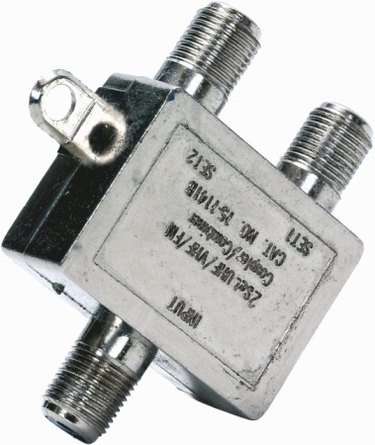
The differences between TV splitters and couplers are quite few. For the most part the serve the same purpose, which is to split the cable signal input for distribution between two or more electronic devices. The differences between a splitter and coupler lay in how the devices are designed and achieve their purposes.
Design
Video of the Day
A cable splitter is designed with three ports -- an input port and two output ports. A coupler, on the other hand, is designed with four ports -- an input port, two output ports and an isolation port. The isolation port terminates the signal to prevent unnecessary signal loss. Cable splitters prevent signal loss through internal resistors that reduce the signal between outputs and input to maintain a stable feed.
Video of the Day
Function
The functional purpose of a cable splitter is to divide a signal source, such as a cable TV signal, for example, into two signals that are distributed to two devices instead of feeding into just one. A coupler is capable of doing the exact same function, but it's also capable of joining two signal sources into one more powerful feed.
Signal Loss of a Splitter
Typically a two-way TV splitter will lose 3.5 decibels of input signal. A further 20 decibels are lost to isolation done by the internal resistors. Overall, these tiny increments barely impact the quality of a television signal passing through a generic coaxial cable. The signal feed provided by a splitter is steady and doesn't change if only one device is using the signal, as opposed to both.
Signal Loss of a Coupler
The coupler generally outperforms the splitter in terms of signal loss. However, directional couplers are placed throughout the coupler, which help distribute the signal more efficiently. At times of high usage, such as when both devices are using the signal, the signal loss can be as high as 28 decibels. When only one device is using the signal, signal loss can be as low as 3 decibels. This means that the signal distributed by a coupler fluctuates, unlike the signal provided by a splitter.